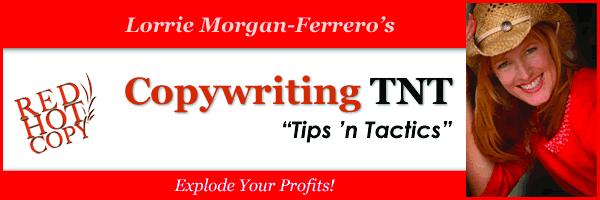Featuring Lorrie Morgan-Fererro on Neuro Linguistic Programming

Ah, how time flies! It seems as though we just prepared our first four issues for publication and it’s time to move ahead and produce Issue No.5. We’re still working through formatting problems and looking for a program that will handle our content in a way that meets our specifications. Producing text, editing it, and finding that it posts up in an entirely different mode can be frustrating, to say the least
However, we’re still posting with Learning Times. To receive all of our issues go to www.learningtimes.org and scroll down the menu to “files for sharing”. Click on it and you’ll get the title of about 15 different files posted from around the world. Our Eye2theWorld files are there. Just click on the issue you’d like to view and then hit “download”. You’ll be there.
This issue we’re trying something different. Instead of writing an essay on something I think might interest you as Part One, we’re printing text from a web page that has meaning far beyond its original intent. Lorrie Morgan-Ferrero is a nationally renowned copy writer. Lorrie not only writes advertising copy for major corporations nation-wide but participates in workshops on marketing around the country. In a recent article on her Web site she reviewed ideas related to the “art of persuasion” and based on Neuro Linguistic Programming theories.. Not only does it pertain to marketing, but it’s directly related to how all of us — teachers, parents, and community leaders — can be more persuasive presenting our ideas. I urge you to read Lorrie’s comments. and apply them to your concerns. Lorrie’s URL is www.red-hot-copy.com .

By Lorrie Morgan-Ferrero, Expert Copywriter
I get asked all the time, “Lorrie, how can I make my copy more persuasive?” Well frankly it helps if you can speak your prospect’s language. But writing persuasively is more involved than just saying the right words. You need to say them in the right order; and in a way that lowers resistance to new information and is acceptable to his or her mind. One discipline that translates nicely to writing persuasive copy is NLP or Neuron Linguistic Programming.
NLP isn’t a replacement for good copywriting. It’s a turbo boost. Meeting a person on his or her own level by using familiar words puts YOU in control of the communication almost immediately.
Have you ever been moved to buy a pair of sexy shoes instead of the sensible, comfy shoes you really needed? But when you got home you didn’t know how you got over the resistance of spending the money? See, people understand the RESULT of making a purchasing decision, but are often unaware of the internal recipe that gets them there. We all know we tend to buy based on emotion over logic. In fact, most buying decisions are largely emotional.
WHO’S RIGHT ANYWAY?
We can all agree there are two sides to the brain, correct? The left (logical) and the right (emotional). Interesting fact: information is first perceived by the emotional right brain. Then within a fraction of a second, it shoots over to the logical left. Then finally, once again, is reflected to the emotional right. In other words, every message we get is influenced by the emotional right brain. Pretty fascinating, huh?
Here is the basic principle of NLP as I understand it. There is no mental resistance to an idea you perceive as your own. And whenever any of us engages our imagination, we think we came up with the idea ourselves. So it must be great!!! It aligns with our own beliefs so it’s unconsciously accepted as being the truth and you act as if it’s true. So NLP always prefers to presuppose that changes can be made quickly and automatically.
So let’s cover some NLP principles and how to use it in the art of persuasive writing:
PACING
Pacing is putting yourself in the prospect’s shoes through languaging. Look at David Ogilvy (one of the greatest advertising masters who ever lived) as an example. His first headline for Rolls Royce didn’t come from HIS mind, but that of an engineer at the factory. Ogilvy was told, “You know David, the loudest noise from this Rolls Royce comes from the clock on the dashboard at 60 miles an hour.” And David thought this man, this engineer must know something because he’s constantly in the flow about changes and revisions and everything happening at the Rolls Royce factory. So David did his research and made a connection. I’m not suggesting the engineer was deliberately using NLP on David, but it’s an illustration of how we as humans connect the dots and are able to write persuasively as a result.
Though similar to empathy, pacing is a bit more complex. In pacing, you actually encourage the prospect to use visualization or other accessing cues in a very subtle and vague way. These are the same communication skills of matching, mirroring and rapport that allow you to pace and lead someone to the sale.
NLP Master Ross Jeffries says, “People will not accept that you are an authority on where they should go unless they accept you’re an authority on where they are at.”
In other words, if you’re reading a letter or listening to a podcast, it makes sense for me as a writer to mirror that experience for you. Then you subtly relax:
*
*”As you’re sitting there reading this letter?”
*”As you are sitting in front of your computer?”
*”While you are listening to this broadcast?”
Any of those phrases have you and the prospect share an experience, which moves him or her toward the sale. Have you ever met someone and felt an instant kinship with that person? Or on the other hand, met someone who you just could never quite get on the same wave length?
What if you knew how to get on that person’s “wave-length”? You would have a totally different outcome; the outcome you wanted! That’s the importance of defining your target audience (or my own term, TAR-KET). You can communicate with that one person because you have already defined him or her.
PRESUPPOSITION OF AWARENESS
This technique also ties to speaking directly to your own target market. (If people don’t have their target market nailed down, it doesn’t matter how good their copy is. It doesn’t matter if you’re trying to sell beef to a vegetarian. It’s just not going to work. So you really have to zone in on your target market.)
The way you do that is to understand your product. Figure out where they shop, where they eat, what they look like. Are they a family or are they single? Do they have dogs or not? Do they live in a rural area or the city? These keys make a huge difference when you are trying to figure out who your target market is. When I write my copy, I write to one person. I visualize everything about them so it’s very real to me when I start to write. I would suggest that you funnel down your target market to your TARKET as much as possible. That how you’re able to give them the illusion. You’ve given them information and the mind fills in the blanks. The more specific the better is what I’m saying.
In this technique you direct the conscious mind of the reader by assuming something is true. So you speak to him or her as if something has already happened. Here are some examples:
*”As you become aware of?”
*”As you recognize ?”
*”I’m not sure just how excited you can get about this offer but?”
The proper use of language patterns in written words means you communicate by tonal shifts, tempo shifts etc, following the patterns of a question, a statement, or a command. We invite people to share our certainty about our product or service by using an intonation of a command or a statement like “Do you agree?”
PRESUPPOSITION OF TIME
This concept piggybacks onto the previous one. You build on the prospect’s experience of awareness by adding in the element of time. Examples:
*”Before you order today?”
*”After you make your decision to order?”
*”While you are filling out your order form?”
Use language patterns to move yourself and others in a direction that results in a win-win situation. The truth is that we are selling ourselves every day, all day long. Doesn’t it make a lot of sense to use communication skills like NLP to lead someone where you want them to go? And the more that happens, the more successful you will be with your copy.
This article was inspired by an interview with Ross Jeffries master of Neuro Linguistic Programming (NLP), and founder of www.Seduction.com . For the complete interview, please visit my blog http://red-hot-copy.com/blog.htm . (Lorrie Morgan-Fererro)
